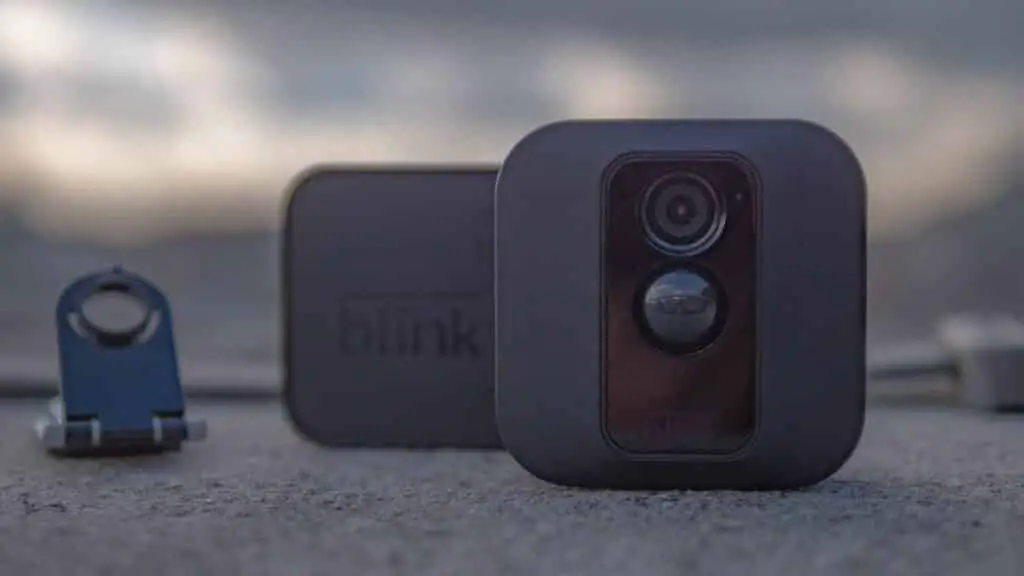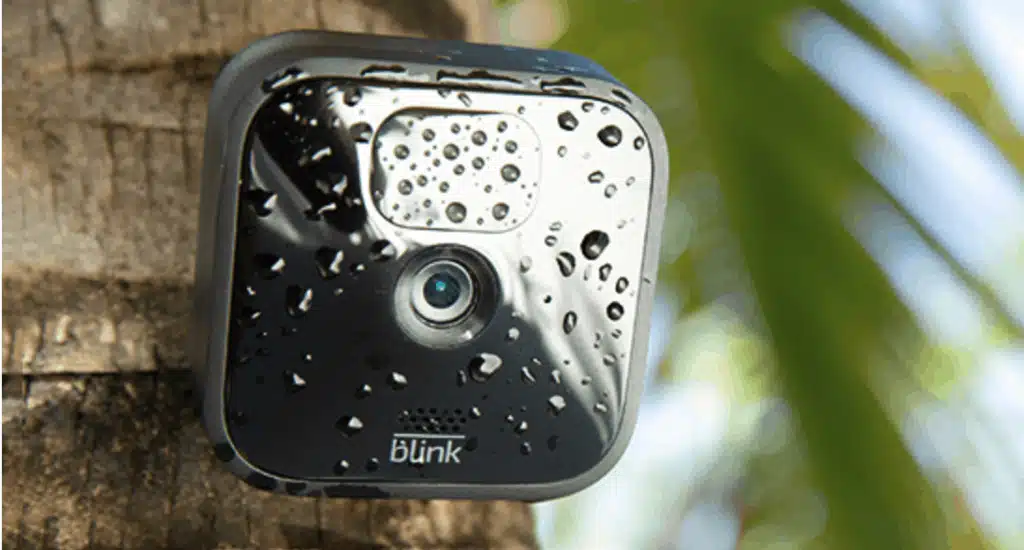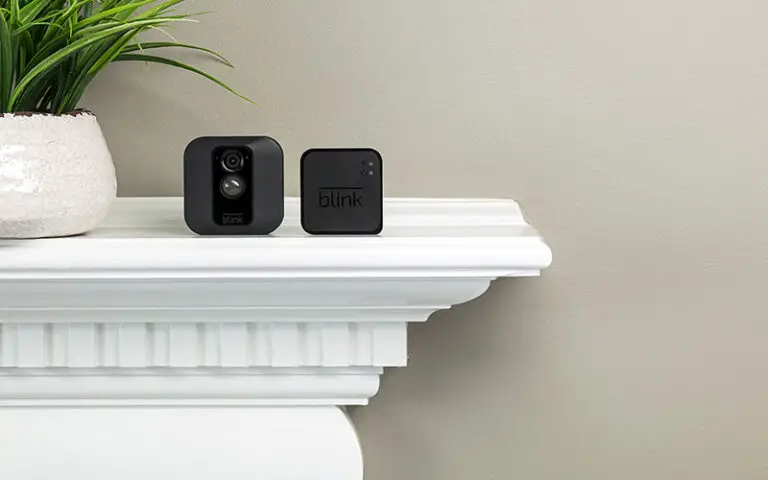Introduction
How To Hang Blink Cameras: Blink cameras’ cost, convenience of use, and home security benefits have made them popular. These little, wireless gadgets make property and environment monitoring easy. To maximize Blink camera capability, you must properly install and hang them.
The strategic placement of Blink cameras. Selecting the right locations for installation is vital to maximize their effectiveness in capturing crucial footage and deterring potential intruders. We will discuss various indoor and outdoor mounting options, taking into account factors such as coverage area, accessibility, and potential obstructions. Staying informed about the latest advancements will empower you to stay ahead of the curve and make the most of your Blink camera system.
From syncing the camera with the Blink mobile app to securely mounting it in the designated places, the following sections will walk you through the installation process. We will cover mounting methods and how to handle diverse surface kinds and weather conditions. We will also discuss Blink updates and new features since this guide was published as technology and security demands change.

Where do you hang a Blink camera?
Ideally, the camera should be mounted in an area with a clear view of any points of entry. This could be the front or back door, windows, and garages. Additionally, the camera should be mounted in an area with good lighting and not blocked by trees or other obstacles.
For the best performance and safety, put blink cameras in the right place. There are many things to think about when hanging a Blink camera so that it works as well as possible.
The camera should be situated to capture the most essential surveillance areas first. Ground-floor windows, front doors, and back doors are common entryways. Blink cameras deter burglars and detect suspicious activities.
Tampering and theft can be prevented by mounting the camera out of reach. Install the camera 7–10 feet above ground to prevent unauthorized access.
Camera field of vision matters. Learn the camera’s angle of coverage to discover blind areas and avoid monitoring gaps. Adjustable-mount blink cameras allow angle and viewing changes.
Rain, snow, and extreme temperatures should not damage outside cameras. Protecting the Blink camera from harsh elements extends its lifespan and reliability.
Can I stick Blink camera to wall?
Easy to install wall mount for your Blink Mini Indoor camera. Simply remove the safety tape from the back of the holder, and place it in your desired area and position, let it sit there for at least 6 hours then slide your Blink Mini camera.
Blink cameras can be mounted to walls, depending on the model and mounting options. Blink cameras provide adhesive mounts for wall attaching and other mounting options. Some indoor variants like the Blink Mini come with sticky mounts.
These mounts adhere solidly to walls and ceilings. They normally have strong adhesive backings to keep the camera in place. To ensure a firm adhesion, wipe the wall well before attaching the mount. Before attaching the Blink camera mount to the wall, consider the camera’s range of view and the region to monitor. Photograph the desired view by positioning the camera at the right height and angle.
Powering and attaching the camera requires placing it near an electricity outlet or Wi-Fi signal. On rough or uneven walls, sticky mounts may not work. You may need to drill and use camera screws or buy appropriate third-party mounts in such circumstances.
Can you mount Blink camera outside?
The lack of cables for video and wires for power means the Blink Outdoor can go just about anywhere. For outdoor cameras, you have a few things to consider when it comes to placing them. For sure you want to cover your doors – the front, back and garage door, if you have one.
Blink cameras can be used outdoors, but you must choose the correct type and take precautions. Make sure your Blink camera is branded “outdoor” or “weatherproof.” Outdoor Blink cameras can survive rain, snow, dust, and harsh temperatures. These cameras include weatherproof housing to protect its internal components from moisture and other factors.
Read the manufacturer’s exterior installation instructions before mounting the camera. Follow the instructions to keep the camera weatherproof and outdoor-ready. Consider entry points, walkways, and your property’s perimeter before placing the camera. Make sure the camera’s field of view covers these vital regions. Outdoor Blink cameras often include adjustable mounts for angle adjustment. Mount the camera high for the greatest view and out of reach to prevent tampering or theft.
How far can I mount Blink camera?
How far away can camera units be placed? Under normal circumstances, the Sync Module is capable of communicating with Blink cameras up to 100 ft. away in any direction.
The maximum distance you can place a Blink camera depends on its model and wireless range between the camera and the sync module (hub). Blink cameras are wireless, therefore their distance from the sync module depends on various parameters.
Most Blink cameras can reach 100 feet (30 meters) from the sync module in an open space with minimal interference. This range can vary depending on barriers like walls, doors, and other electronic equipment that interfere with the wireless signal.
Tips to maximize range and reduce interference:
For a more robust connection, keep the camera within 50–75 feet of the sync module. In ideal conditions, the cameras can work up to 100 feet away.
Thick walls, metal buildings, and other huge items can block the signal. Maintain a camera-sync module line of sight. To improve camera communication, situate the sync module centrally, preferably raised and away from obstructions.
Think about utilizing a Wi-Fi extender to cover more ground and improve camera connectivity. Test signal strength during installation: Before permanently installing the cameras, briefly place them in your selected locations and check their sync module connection.
Can you mount Blink camera on ceiling?
The vertical mounting point (for walls or other vertical surfaces) is located above the USB port at the rear of the camera. The horizontal mounting point (for flat surfaces and ceilings) is located at the bottom of the unit.
Yes, you can mount a Blink camera on a ceiling, and it can be a strategic and effective placement choice in certain situations. Mounting a Blink camera on the ceiling offers several benefits, depending on the area you want to monitor and your surveillance objectives.
Ceiling-mounted Blink cameras are often used inside where there isn’t much wall space or where a better view of the room is available from a higher position. Some of the benefits of mounting from the roof are:
Wider field of view: Placing the camera on the ceiling can offer a broader and more comprehensive view of the room compared to wall mounting. This is particularly useful for monitoring large spaces or open areas.
Discreet placement: Ceiling-mounted cameras can be less noticeable and blend into the room’s architecture, making them less obtrusive and more inconspicuous.
Tamper-resistant: Mounting the camera on the ceiling can make it less accessible and challenging for potential intruders to tamper with or disable.
Improved motion detection: In some cases, ceiling mounting can enhance the camera’s motion detection capabilities, as it provides a different perspective and may be less obstructed by furniture or other objects.
Avoiding wiring: Wireless Blink cameras eliminate the need for extensive wiring, making ceiling installation more convenient.
When ceiling mounting the Blink camera, ensure that it is securely attached to a stable surface and that the camera’s lens is positioned at the desired angle for optimal monitoring. Consider the camera’s field of view and the area you want to cover to ensure maximum surveillance effectiveness.
Can you install Blink without drilling?
No drilling required – this easy-to-install wall mount lets you put up your blink video doorbell without the pain of drilling, just peel off the adhesive cover and place it on any smooth surface you like (wood, tile, marble, glass, etc.)
Yes, you can put Blink cameras without drilling because the company makes a lot of different mounting options and accessories .Because they are made to be easy for anyone to use, blink cameras can be set up in a number of different ways.
Here are some non-drilling installation options for Blink cameras:
Adhesive Mounts: Many indoor Blink camera models come with adhesive mounts in the package. These mounts have strong adhesive backing that allows you to stick the camera securely to flat surfaces like walls or ceilings. Adhesive mounts offer a hassle-free installation process without the need for drilling holes.
Magnetic Mounts: Some Blink camera models feature magnetic mounts. These mounts can be attached to metal surfaces like metal door frames or magnetic plates. The camera then sticks to the mount through magnets, providing a straightforward installation process without any drilling.
Suction Cup Mounts: For temporary installations, suction cup mounts can be used on smooth surfaces like windows. The camera adheres to the suction cup mount, allowing for easy repositioning as needed.
Freestanding Mounts: Some Blink cameras come with freestanding mounts or stands that allow you to place the camera on a flat surface like a shelf or table. These mounts are useful for indoor use and do not require drilling.
Third-Party Accessories: There are also third-party mounting options available for Blink cameras, such as adjustable brackets, clamps, or straps. These accessories can offer flexible installation methods without drilling.

Can I adjust the angle of the mounted Blink camera?
Yes, most Blink camera mounts offer some degree of adjustability, allowing you to change the camera’s angle to capture the desired view. You can tilt and swivel the camera to get the best field of view.
Yes, you can adjust the angle of the mounted Blink camera to ensure you get the best view and coverage of the area you want to monitor. Blink cameras typically come with adjustable mounts that allow you to change the camera’s angle easily.
Here’s how you can adjust the angle of a mounted Blink camera:
Swivel and Tilt: Most Blink camera mounts have a swivel and tilt mechanism. The swivel allows you to rotate the camera horizontally, while the tilt enables you to adjust the camera vertically. By combining these movements, you can position the camera precisely where you want it, optimizing the field of view.
Loosen and Tighten: To adjust the angle, first, loosen the screws or knobs on the mount that control the swivel and tilt. This will allow you to move the camera more freely. Once you have set the desired angle, tighten the screws or knobs to secure the camera in place.
Test the View: After adjusting the angle, check the camera’s live view on the Blink app or monitoring system to ensure you are capturing the intended area effectively. Make any further adjustments if needed.
Fine-Tuning: Some Blink camera models also allow for fine-tuning adjustments, which may involve rotating a small dial or lever for precise angle changes.
The camera’s placement and the area you want to monitor when adjusting the angle. Ensure that the camera has a clear line of sight to the target area and that there are no obstructions blocking its view.
What type of surfaces can I mount Blink cameras on?
Blink cameras come with mounting brackets and screws suitable for mounting on various surfaces, including wood, drywall, stucco, and brick. Ensure that the chosen surface is stable and can support the weight of the camera.
Blink cameras can be mounted on many surfaces. Manufacturer or third-party mounting accessories determine the surface a Blink camera can be mounted on. Here are some common Blink camera mounting surfaces:
Most Blink cameras have adhesive or screw mounts for flat walls. Sticky mounts function on smooth, clean surfaces, whereas screw mounts work on wood, drywall, and other drillable materials.
Some Blink cameras can be mounted on ceilings. These cameras have movable mounts so you can position them on the ceiling for different angles. Blink cameras with magnetic mounts can be mounted on metal door frames or magnetic plates.
Suction cup mounts can be used on smooth surfaces like glass windows for temporary monitoring or indoor use. Some Blink cameras have freestanding mounts or stands for shelves or counters.
Some of the Blink cameras can be put on outside walls, fences, or other buildings because they are waterproof. Make sure the camera says “outdoor” on the label, and then follow the manufacturer’s guidelines for installing it outside.
Conclusion
Blink cameras integrate with other smart home products and platforms to automate and control your security setup. You can monitor your property’s security in real time from anywhere with live streams and motion alerts on your phone.
As technology advances, it’s essential to stay informed about potential updates and new features introduced by Blink. Keeping up to date with the latest advancements enables you to optimize your camera system and take advantage of new functionalities that could further bolster your home security. By mastering the art of hanging Blink cameras, you have taken a significant step towards creating a safe and protected living environment.
Your gained knowledge offers you more control over your security setup and confidence to solve any issues. We encourage you to constantly evaluate and improve your security measures as you apply this guide’s knowledge. Check camera positions, investigate security options, and be attentive for threats.

